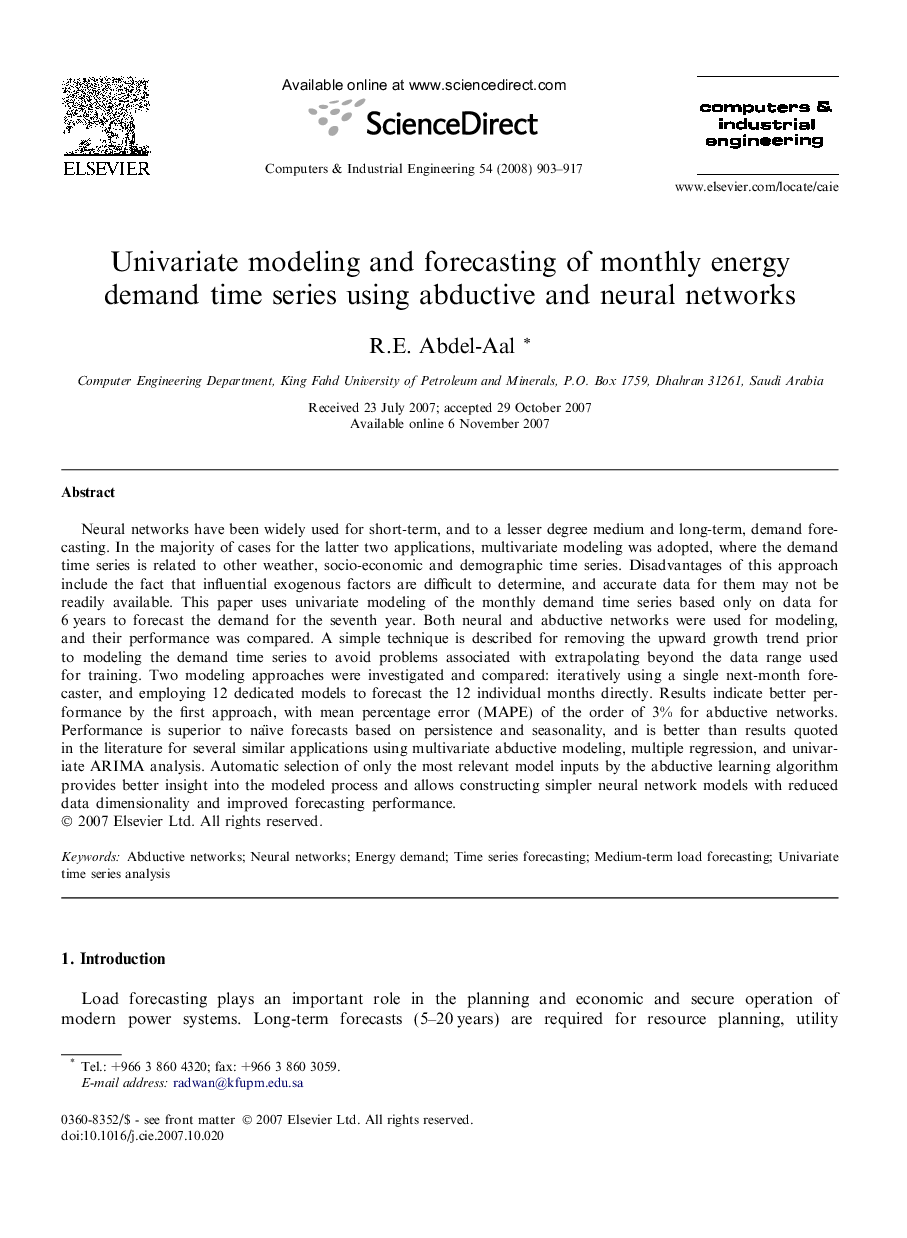| کد مقاله | کد نشریه | سال انتشار | مقاله انگلیسی | نسخه تمام متن |
|---|---|---|---|---|
| 1135665 | 956107 | 2008 | 15 صفحه PDF | دانلود رایگان |

Neural networks have been widely used for short-term, and to a lesser degree medium and long-term, demand forecasting. In the majority of cases for the latter two applications, multivariate modeling was adopted, where the demand time series is related to other weather, socio-economic and demographic time series. Disadvantages of this approach include the fact that influential exogenous factors are difficult to determine, and accurate data for them may not be readily available. This paper uses univariate modeling of the monthly demand time series based only on data for 6 years to forecast the demand for the seventh year. Both neural and abductive networks were used for modeling, and their performance was compared. A simple technique is described for removing the upward growth trend prior to modeling the demand time series to avoid problems associated with extrapolating beyond the data range used for training. Two modeling approaches were investigated and compared: iteratively using a single next-month forecaster, and employing 12 dedicated models to forecast the 12 individual months directly. Results indicate better performance by the first approach, with mean percentage error (MAPE) of the order of 3% for abductive networks. Performance is superior to naı¨ve forecasts based on persistence and seasonality, and is better than results quoted in the literature for several similar applications using multivariate abductive modeling, multiple regression, and univariate ARIMA analysis. Automatic selection of only the most relevant model inputs by the abductive learning algorithm provides better insight into the modeled process and allows constructing simpler neural network models with reduced data dimensionality and improved forecasting performance.
Journal: Computers & Industrial Engineering - Volume 54, Issue 4, May 2008, Pages 903–917